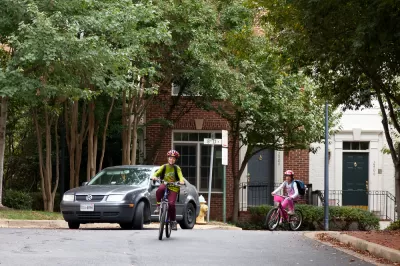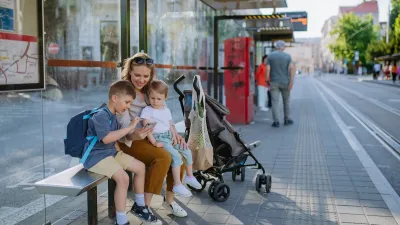Around the world cities struggle to build a safe, fun, kid-friendly environments.

Cities across the world must grapple with the issue of a more sedentary generation of kids. Tim Gill author of No Fear: Growing Up in a Risk Averse Society argues that building cities for cars and commerce is keeping cities from unlocking a better quality of life.
In a survey of strategies different cities have used to tackle the issues, Laura Laker highlights the Albanian city of Tirana, where the mayor built up support for closing a large section of city to cars by creating a series of children’ events that opened up the space to pedestrians. "Tirana also boasts a 'city council for kids', where young representatives meet the mayor, debate and take their findings back to school," Laker writes.
Lexington, Kentucky had success in reinvigorating its parks during the long, hot summers by adding a novel attraction. "The following summer a pop-up water fountain was installed on the grass of nearby Northeastern Park, and its impact was transformative," Laker writes. The additional attraction didn't just make the park more enjoyable to the people who generally used it, but was successful in attracting people who would not have previously used the park.
FULL STORY: What would the ultimate child-friendly city look like?

Alabama: Trump Terminates Settlements for Black Communities Harmed By Raw Sewage
Trump deemed the landmark civil rights agreement “illegal DEI and environmental justice policy.”

Planetizen Federal Action Tracker
A weekly monitor of how Trump’s orders and actions are impacting planners and planning in America.

The 120 Year Old Tiny Home Villages That Sheltered San Francisco’s Earthquake Refugees
More than a century ago, San Francisco mobilized to house thousands of residents displaced by the 1906 earthquake. Could their strategy offer a model for the present?

LA’s Tree Emergency Goes Beyond Vandalism
After a vandal destroyed dozens of downtown LA trees, Mayor Karen Bass vowed to replace them. Days later, she slashed the city’s tree budget.

Sacramento Leads Nation With Bus-Mounted Bike Lane Enforcement Cameras
The city is the first to use its bus-mounted traffic enforcement system to cite drivers who park or drive in bike lanes.

Seattle Voters Approve Social Housing Referendum
Voters approved a corporate tax to fund the city’s housing authority despite an opposition campaign funded by Amazon and Microsoft.
Urban Design for Planners 1: Software Tools
This six-course series explores essential urban design concepts using open source software and equips planners with the tools they need to participate fully in the urban design process.
Planning for Universal Design
Learn the tools for implementing Universal Design in planning regulations.
Ada County Highway District
Clanton & Associates, Inc.
Jessamine County Fiscal Court
Institute for Housing and Urban Development Studies (IHS)
City of Grandview
Harvard GSD Executive Education
Toledo-Lucas County Plan Commissions
Salt Lake City
NYU Wagner Graduate School of Public Service



























